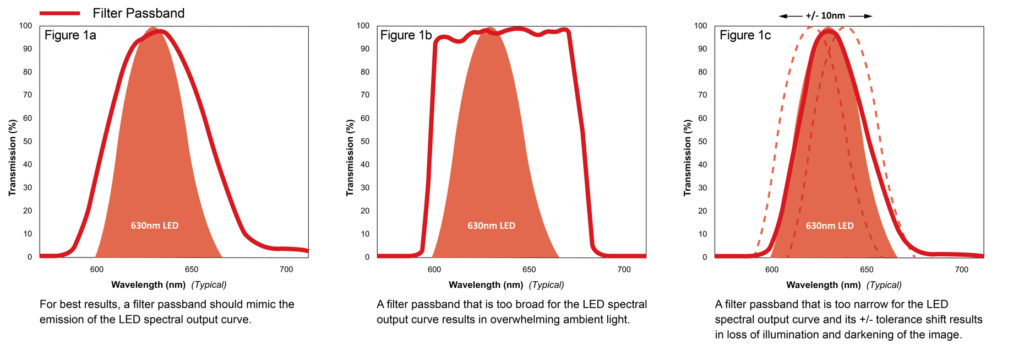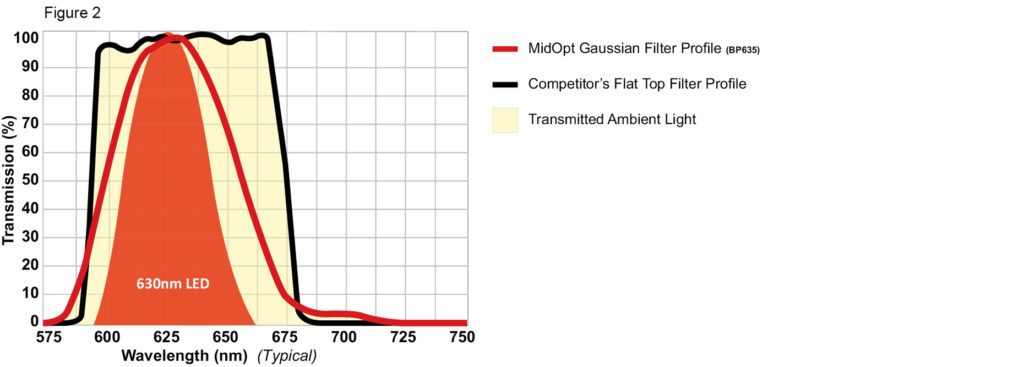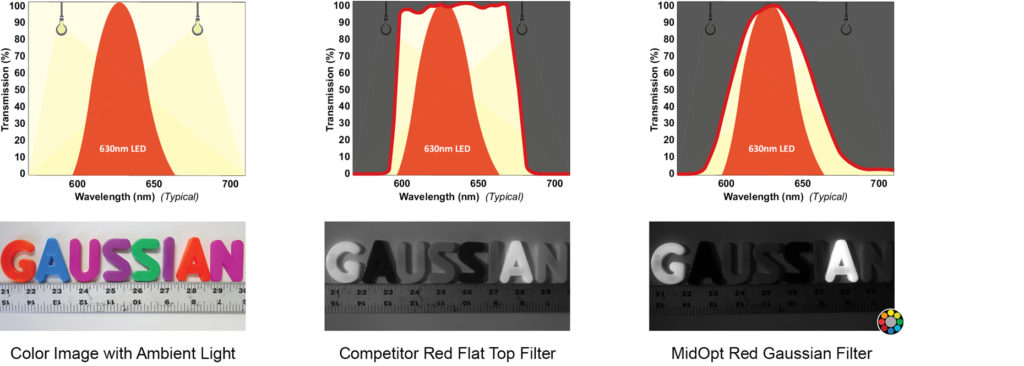Gaussian Transmission Curve
The spectral output from a single color LED light source used in any vision application typically follows a normal Gaussian or “bell shape” profile. For a machine vision bandpass filter to be most effective, the position, height and width of the passband should approximate this bell-shaped curve (Figure 1a).
Selecting a filter that is too broad can allow more unwanted ambient light to pass through the filter (Figure 1b), while selecting a bandwidth that is too narrow can result in loss of a significant portion of the desired illumination and overall darkening of the image (Figure 1c). Either can result in a sharp reduction in contrast.

Similarly, in industrial fluorescence applications, it is often not desirable if the filter passes most of the light in those regions where the illuminant or fluorescent emission provide only a very weak signal, particularly when ambient light or the excitation light source is capable of overwhelming the application.
Contrary to this thought, some bandpass filter providers state that they design their filters to have a “high and flat transmission profile,” claiming that this will provide more even illumination. Instead, this shape leads to undesired effects. (Figure 2). With these filters, the tail ends of the Gaussian-shaped LED spectral output curve (where only a very weak signal is provided) are allowed to dictate the fit of the passband, and far too much ambient light can be allowed to pass relative to the very small amount of LED light emitted in these spectral regions.


Camera: 5 megapixel GimaGO camera
Lens: Kowa 12mm, f/1.8-11, 10 megapixel lens (Part #: LM12JC10M) iris set at f/11
Light Source: 630nm red LED and broad spectrum metal halide light

